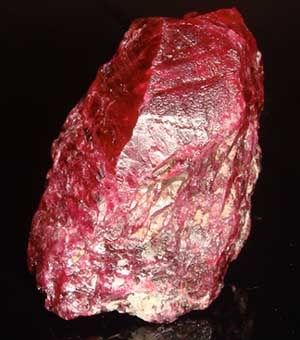The Day of Eternal Light: Negotiations With The Greenlandic Government
In this post, the second of four, Greg Valerio, fair trade activist and staff writer, discusses the paradigm shift in Greenland after their independence, and the actual negotiations with the Greenlandic Bureau of Mining and Petroleum.
The Greenlandic Bureau of Mining and Petroleum was so ignorant of small scale Inuit ruby mining that they assumed that cyanide was involved. En fait, the mining of rubies requires no chemicals whatsoever.
~ Marc Choyt, Éditeur
The 21st of June, 2009 is the day Greenland almost got its independence. The BBC news wire that morning headlined with the following:
“The Arctic island of Greenland is assuming self-rule, in the latest step towards independence from Denmark. The move follows a referendum on greater autonomy in November. It will see Greenland take a greater share of revenues from its natural resources. The local government is taking control of the police and the courts. Greenlandic – or Kalaallisut – becomes the official language.”
As I wandered around Nuuk I was constantly meeting members of the new Parliament. The finance minister Akitsinnguaq Olsen in particular was friendly, engaging, and openly interested in talking about the future of their mineral resources. She had heard the story of the Ruby protests and that Inuits had been arrested and we talked. This was an extraordinary breath of fresh air compared to my experience with politics in the UK.
The Bureaucrats
On the 22nd the small-scale miners and myself met with the Bureau of Mining and Petroleum (BMP). The BMP are the government agency responsible for administrating the mineral wealth in Greenland.
The new energy minister, Ove Karl Berthelsen, had been instructed to make sure the Union voice was heard and reflected in the new mineral law being drafted. This was a significant breakthrough.
Up until the recent change of government, members of the 16th August Union (who had staged a protest on True North Gem’s exploratory site on August 16th, 2007 had been treated as criminals and were deliberately marginalized by the ethnic Danish BMP administration.
As we arrived for our meeting, some things had changed and others had not since my encounter with BMP officials the previous year.
On one side of the table sat Jorn Skov Nielsen, the Director of the BMP, who to date had refused to talk to the Union. Jens Hessendhal, the lawyer who fidgeted throughout the meeting. Also in attendance was a geologist, another lawyer and two young men who were caseworkers.
The scene was set: six white Danish men and the Union who were a mixture of local small-scale miners, a female journalist, an Inuit activist, and myself.
It seemed clear that Skov’s team did not seem at ease with the meeting which I assume they had been ordered to attend. Yet in my view they projected an air of superiority based upon the BMP’s historical power over the local people. As we settled, Hessendhal began fidgeting.
Jorn Skov Nielsen instantly seized the agenda by outlining the nature of the discussions. He talked about the new law, how he wanted the Union to have input, how there was only a short deadline and they would give us all a copy of the new draft law within two weeks, but only in Danish and Kalaallsuit.
En bref, he expected this group to read, understand, officially comment on and follow through on the writing of a new mineral law within a four-week period.
I quickly appraised that though the government had changed, the institutional blindness and lack of respect for the local people and culture was still well manifest.
I asked a series of questions:
“What were his team’s experience in small-scale mining issues?”
“None”, he replied.
“Who are you using to help you shape the small-scale mining aspect of the law?”
“No-one”, he replied.
“What budget have you set aside to secure equal rights and representation for local miners in the new law?”
“None”, he replied.
The ignorance of small-scale mining was further compounded when they talked about the irresponsible use of cyanide by small-scale miners. Firstly cyanide is only used in gold mining, secondly most small-scale miners actually use mercury and thirdly the Greenland miners are gemstone miners who use no chemicals at all.
This group of men had no experience and had not even bothered to find out about local small-scale mining.
The only information they had, apart from the criminal proceedings they had instigated, was general book and anecdotal knowledge from their background in servicing large scale miners. These larger corporate organizations generally despise small scale miners and hold deep seated prejudices against them. One member of the World Gold Council famously exploded at a meeting in London, exclaiming, “All small scale miners should be shot!”
Progress began when Nielsen admitted that they needed help. We offered them the services of an excellent lawyer, Laura Barreto, who has extensive knowledge in shaping responsible small-scale mining law.
Nielsen also agreed to pay the fees that will allow the Union to have a professional voice into the process. They talked about proceeding in ‘a spirit of good faith’.

